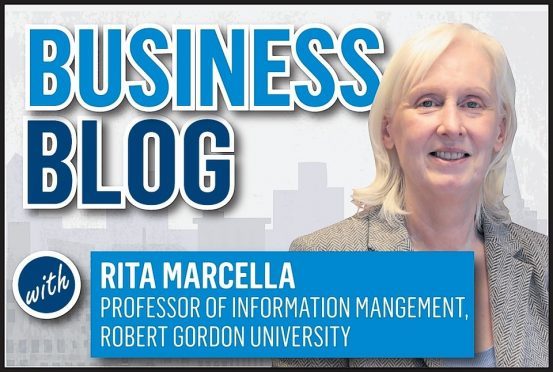I recently spent a weekend touring the historic sites of Aberdeen city centre with my eight-year-old grandson.
As we stood at the Mercat Cross in the Castlegate, he made a telling comment: “If this was Stratford-upon-Avon, then it would be beautiful and full of people and cafes and things to see.”
And as we stood there I surveyed the buildings around me. There was a betting shop, lots of charity shops and a couple of restaurants that had gallantly and, hopefully, set out chairs in the November sunshine.
But it was empty of life. There was little sense of a historic city or of our culture. There was also no evidence of the art and design of the city, beyond a single DanceLive banner.
We had walked there from the Bon Accord Centre past our new Marischal Square, which was pristine and clean but disappointingly empty too, where huge sums have been invested in accommodation that can scarcely be in demand.
Meanwhile, in the Castlegate exists a gem that might also have been embraced, enlivened and celebrated.
My grandson and I sought out Provost Skene’s House, a historic gem, now again visible and beautiful and at the heart of Marischal Square.
It is still, however, somewhat hidden by giant buildings as it once was by the colossus of St Nicholas House.
At the heart of the new development, there also sits a beacon of artistic endeavour and aspiration, the steel leopard sculpture of Andy Scott.
The Tolbooth Museum was our destination – another fascinating building that I, a resident of Aberdeen for decades, had not realised existed.
It was only after our visit that we stood in Lodge Lane and saw the actual building. Does anyone ever walk down Lodge Lane? We seem in Aberdeen to have something of a tendency to hide our assets in this way.
Will people populate the new Marischal Square and what will bring them there?
My point is that any offer without a market will shrivel and die. A city location will only have life if people have a reason to go there.
The clue in the visitor attraction concept is that people need to be attracted. People will want to see the leopard; people will want to see Provost Skene’s House. There needs to be a critical mass of cultural artefacts to draw visitors in any number.
We might be accused of having had little creativity and design vision in our curatorship as a society of Aberdeen.
One of the most exciting recent developments has been the Nuart Festival’s celebration of street art, with world-class artists creating seven pieces in Aberdeen.
These can be glimpsed from various vantage points as you walk around the city. People will want to see them and they need to be highlighted, drawn attention to and celebrated.
In deciding the future of the city, perhaps we need to turn our backs on the financial administrators who see developments purely in terms of rent and rates, and turn instead to artists, architects, writers, historians, poets, psychologists, enthusiasts and designers to understand better why people would want to be around Marischal Square or the Castlegate.
There also needs to be a sense of what Aberdeen offers that is unique and distinct from other destinations.
We don’t need financial rationales and business cases – we need vision and creativity. We need a sense of what the city might be in 100 not five years’ time. We need more leopards.
We might turn to other cities that have reinvented themselves, while re-energising and regenerating their assets.
We could look at Dundee, which is engaged in and committed to culture and the arts, and its world-leading creative cluster around digital games.
Or we might look at Perth’s embrace of heritage and Glasgow’s sense of itself as a dynamic and modern city.
These cities have had and continue to have their challenges, but they have a surer sense of drive and purpose.
Aberdeen needs to lift its head from current workaday challenges, of which there are many, and focus on where we might go.
We need to understand what is worth keeping and recognise where good design exists in the city – and preserve it. The efforts going into refurbishment of some of our iconic buildings, such as the Music Hall and Art Gallery, are hugely welcome.
We need to recognise where there is beauty in the city and maximise opportunities to see that beauty. We need a design ethos more like Italy which is all about slow movement and quality, and not about racing for the finishing line.
I remember years ago attempts being made to invest in the Castlegate area which came to nothing.
I know how long and what personal commitment it took to achieve preservation of the treasure which is the Tivoli Theatre.
I hear now of a growing recognition that something needs to be done to enhance Union Street. Let us agree that in doing so we should bring the artists and designers in to tell us what to do.
Let’s think not of business rates and economic contribution because that will come. Let’s make it a beautiful street, as it once was, and understand that by doing so we maximise opportunities for an Aberdeen to be proud of in 100 years’ time.
